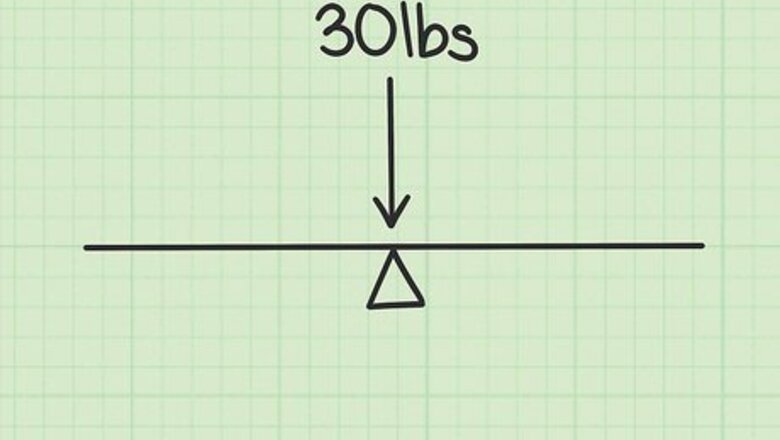
views
X
Research source
If you want to know how to calculate the center of gravity of an object, then you have to find the weight of the object: and any objects on it, locate the datum, and plug the known quantities into the equation for calculating the center of gravity. If you want to know how to calculate the center of gravity, just follow these steps.
Identify the Weight
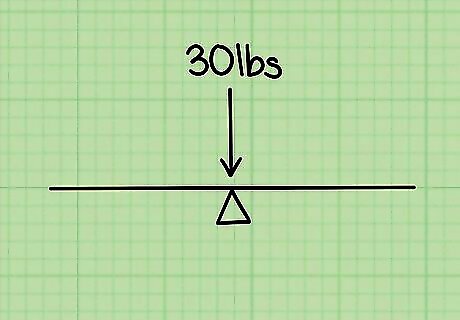
Calculate the weight of the object. When you're calculating the center of gravity, the first thing you should do is to find the weight of the object. Let's say that you're calculating the weight of a see-saw that has a weight of 30 lbs. Since it's a symmetrical object, its center of gravity will be exactly in its center if it's empty. But if the see-saw has people of different weights sitting on it, then the problem is a bit more complicated.

Calculate the additional weights. To find the center of gravity of the see-saw with two children on it, you'll need to individually find the weight of the children on it. The first child has a weight of 40 lbs. and the second child's is 60 lbs.
Determine the Datum

Choose a datum. The datum is an arbitrary starting point placed on one end of the see-saw. You can place the datum on one end of the see-saw or the other. Let's say the see-saw is 16 feet long. Let's place the datum on the left side of the see-saw, close to the first child.

Measure the datum's distance from the center of the main object as well as from the two additional weights. Let's say the children are each sitting 1 foot away from each end of the see-saw. The center of the see-saw is the midpoint of the see-saw, or at 8 feet, since 16 feet divided by 2 is 8. Here are the distances from the center of the main object and the two additional weights form the datum: Center of see-saw = 8 feet away from datum. Child 1 = 1 foot away from datum Child 2 = 15 feet away from datum
Find the Center of Gravity
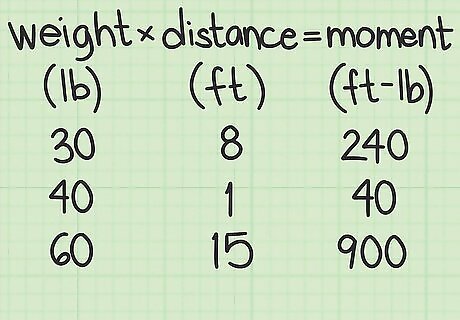
Multiply each object's distance from the datum by its weight to find its moment. This gives you the moment for each object. Here's how to multiply each object's distance from the datum by its weight: The see-saw: 30 lb. x 8 ft. = 240 ft. x lb. Child 1 = 40 lb. x 1 ft. = 40 ft. x lb. Child 2 = 60 lb. x 15 ft. = 900 ft. x lb.
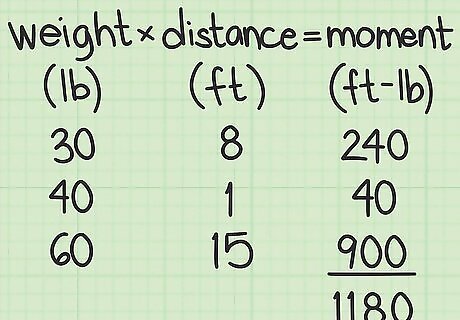
Add up the three moments. Simply do the math: 240 ft. x lb. + 40 ft. x lb. + 900 ft. x lb = 1180 ft. x lb. The total moment is 1180 ft. x lb.
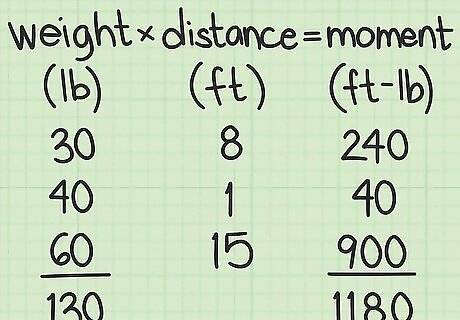
Add the weights of all the objects. Find the sum of the weights of the seesaw, the first child, and the second child. To do this, add up the weights: 30 lbs. + 40 lbs. + 60 lbs. = 130 lbs.
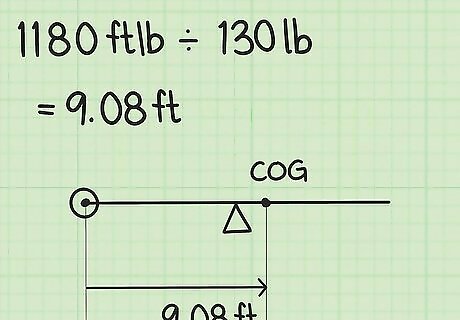
Divide the total moment by the total weight. This will give you the distance from the datum to the center of gravity of the object. To do this, simply divide 1180 ft. x lb. by 130 lbs. 1180 ft. x lb. ÷ 130 lbs = 9.08 ft. The center of gravity is 9.08 feet from the datum, or measured 9.08 feet from the end of the left side of the see-saw, which is where the datum was placed.
Checking Your Answer
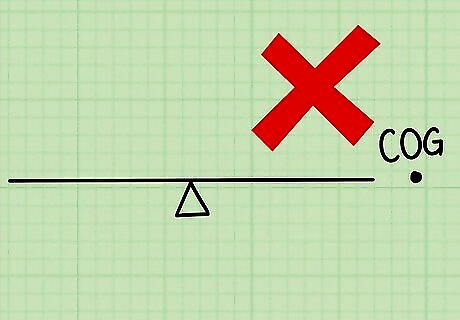
Find the center of gravity in the diagram. If the center of gravity you found is outside of the system of objects, you have the wrong answer. You may have measured the distances from more than one point. Try again with just one datum. For example, for people sitting on a seesaw, the center of gravity has to be somewhere on the seesaw, not to the left or right of the seesaw. It does not have to be directly on a person. This is still true with problems in two dimensions. Draw a square just large enough to fit all of the objects in your problem. The center of gravity must be inside this square.
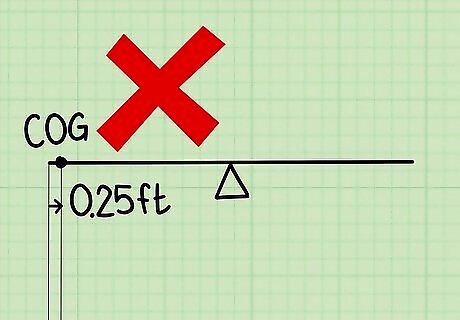
Check your math if you get a tiny answer. If you picked one end of the system as your datum, a tiny answer puts the center of gravity right next to one end. This can be the right answer, but it's often the sign of a mistake. When you calculated the moment, did you multiply the weight and distance together? That's the correct way to find the moment. If you accidentally added them together instead, you'll usually get a much smaller answer.
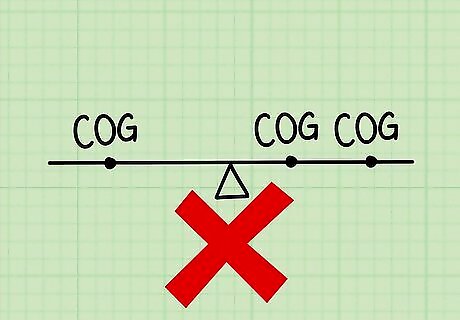
Troubleshoot if you have more than one center of gravity. Every system only has a single center of gravity. If you find more than one, you might have skipped the step where you add all the moments together. The center of gravity is the total moment divided by total weight. You do not need to divide each moment by each weight, which only tells you the position of each object.
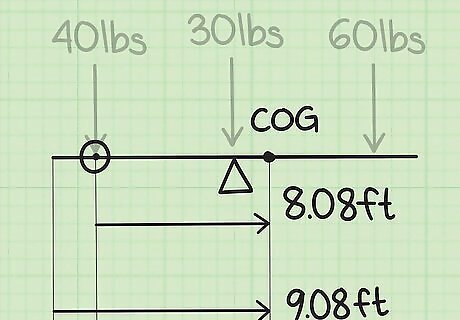
Check your datum if your answer is off by a whole number. The answer to our example is 9.08 ft. Let's say you try it and get the answer 1.08 ft., 7.08 ft, or another number ending in ".08." This most likely happened because we chose the left end of the seesaw as the datum, while you chose the right end or some other point an integer distance from our datum. Your answer is actually correct no matter which datum you choose! You just need to remember that the datum is always at x = 0. Here's an example: The way we solved it, the datum is at the left end of the seesaw. Our answer was 9.08 ft, so our center of mass is 9.08 ft from the datum at the left end. If you pick a new datum 1 ft from the left end, you get the answer 8.08 ft for the center of mass. The center of mass is 8.08 ft from the new datum, which is 1 ft from the left end. The center of mass is 8.08 + 1 = 9.08 ft from the left end, the same answer we got before. (Note: When measuring distance, remember that distances to the left of the datum are negative, while distances to the right are positive.)
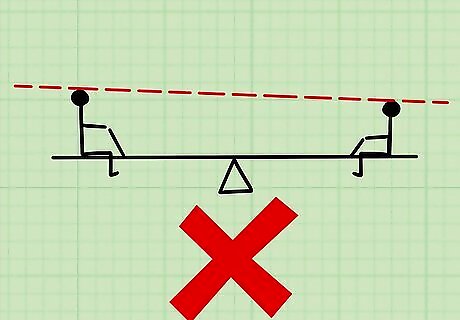
Make sure all your measurements are in straight lines. Let's say you see another "kids on the seesaw" example, but one kid is much taller than the other, or one kid is hanging underneath the seesaw instead of sitting on top. Ignore the difference and take all your measurements along the straight line of the seesaw. Measuring distances at angles will lead to answers that are close but slightly off. For seesaw problems, all you care about is where the center of gravity is along the left-right line of the seesaw. Later, you might learn more advanced ways to calculate the center of gravity in two dimensions.

















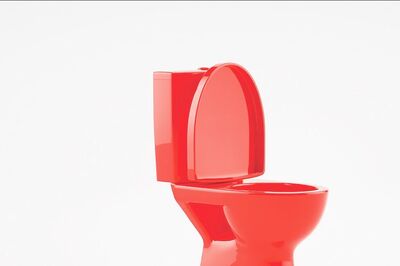


Comments
0 comment